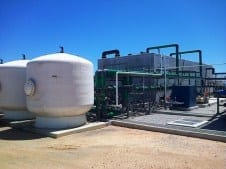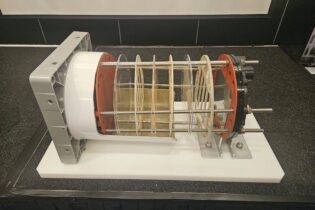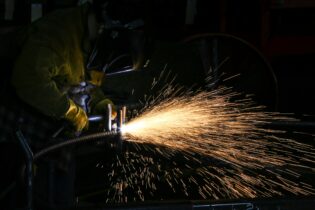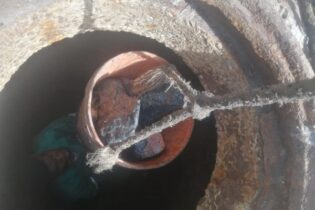Many coastal towns in the Cape Province feel the pressure with water demands exceeding supply, especially during peak holiday seasons.
An example is Lamberts Bay, a town about 280 kilometres from Cape Town – along the Cape West Coast, in Cederberg which has only six boreholes to supply water to the entire region. To resolve this dilemma, the Department of Water and Sanitation (DWS) and the Cederberg Municipality first considered two possibilities: provide additional boreholes; or install a 61-kilometre pipeline feeding from the Clanwilliam Dam. Investigative studies, however, revealed the pipeline would not guarantee a sustainable water supply and test boreholes exposed overly excessive iron and manganese content in the water. The DWS and the town’s municipality therefore decided to commission a new desalination plant adjacent to the town’s existing water purification plant.The Lamberts Bay desalination plant
The Lamberts Bay desalination plant, which came into full operation during the second quarter of 2014 at an approximate cost of R 17 million, uses reverse osmosis (RO) membrane desalination to separate salt from seawater.RO is realised by forcing seawater through a membrane using high external pressure to separate it from the salt, and is one stage in the process enabling the plant to provide 1.7 mega litres of potable water per day.
The plant’s infrastructure has been designed to accommodate future expansion of up to 5 mega litres per day, providing the capacity to supplement the region’s water usage by approximately 50%. The recovery rate of clean, drinkable water across these RO membranes is 42%. The remaining solution, called “brine”, contains the extracted salts in up to double the original concentration of the water. The recovery rate and concentration factors vary, depending on the quality of the seawater feed source. As part of the solution, Veolia installed an innovative energy recovery system which recycles the excess pressure energy from the brine back into the system in order to compensate for high energy required to power the high-pressure pumps. This plant uses approximately 3.75 kW of electricity per cubic metre of potable water produced.






